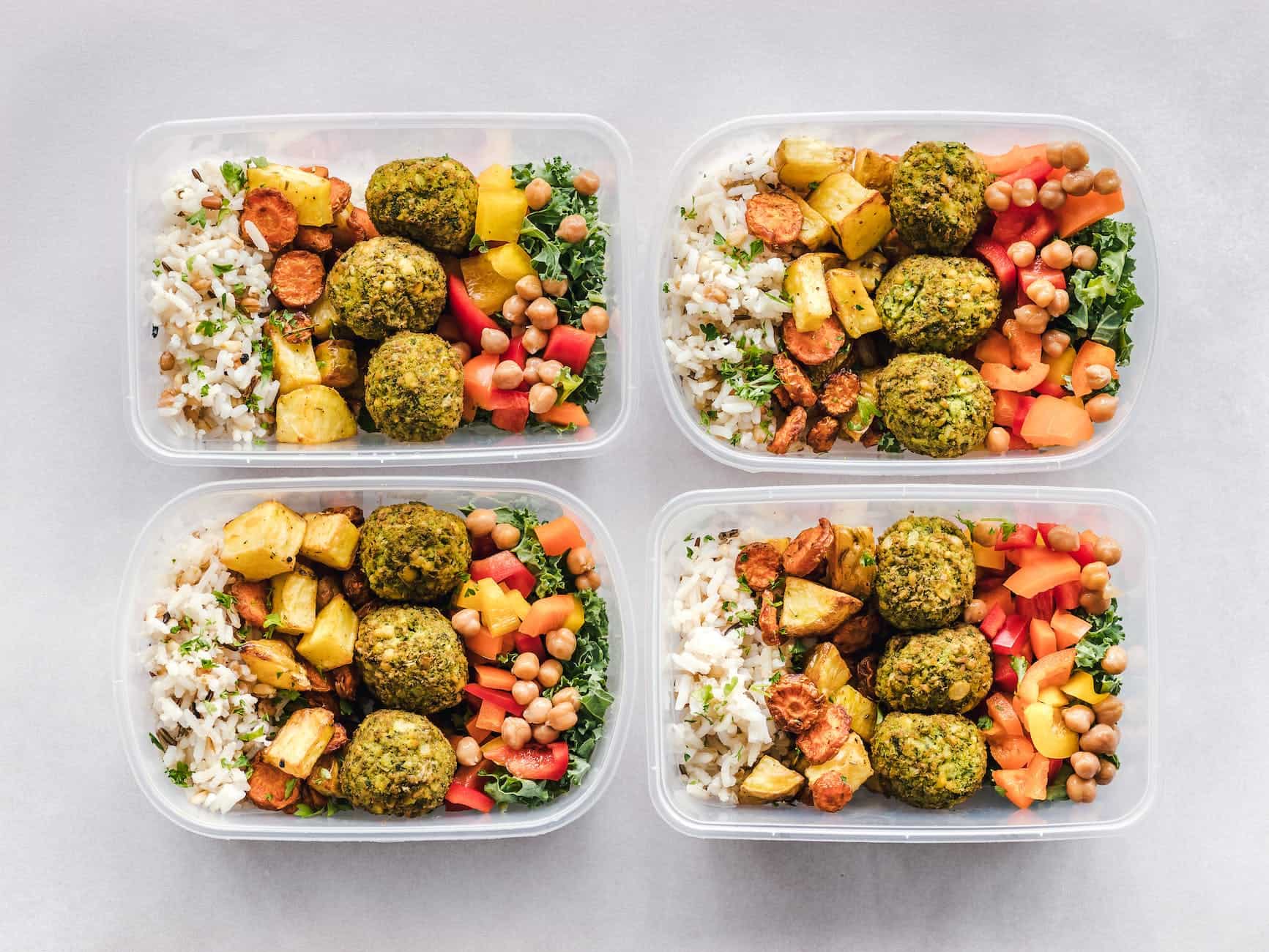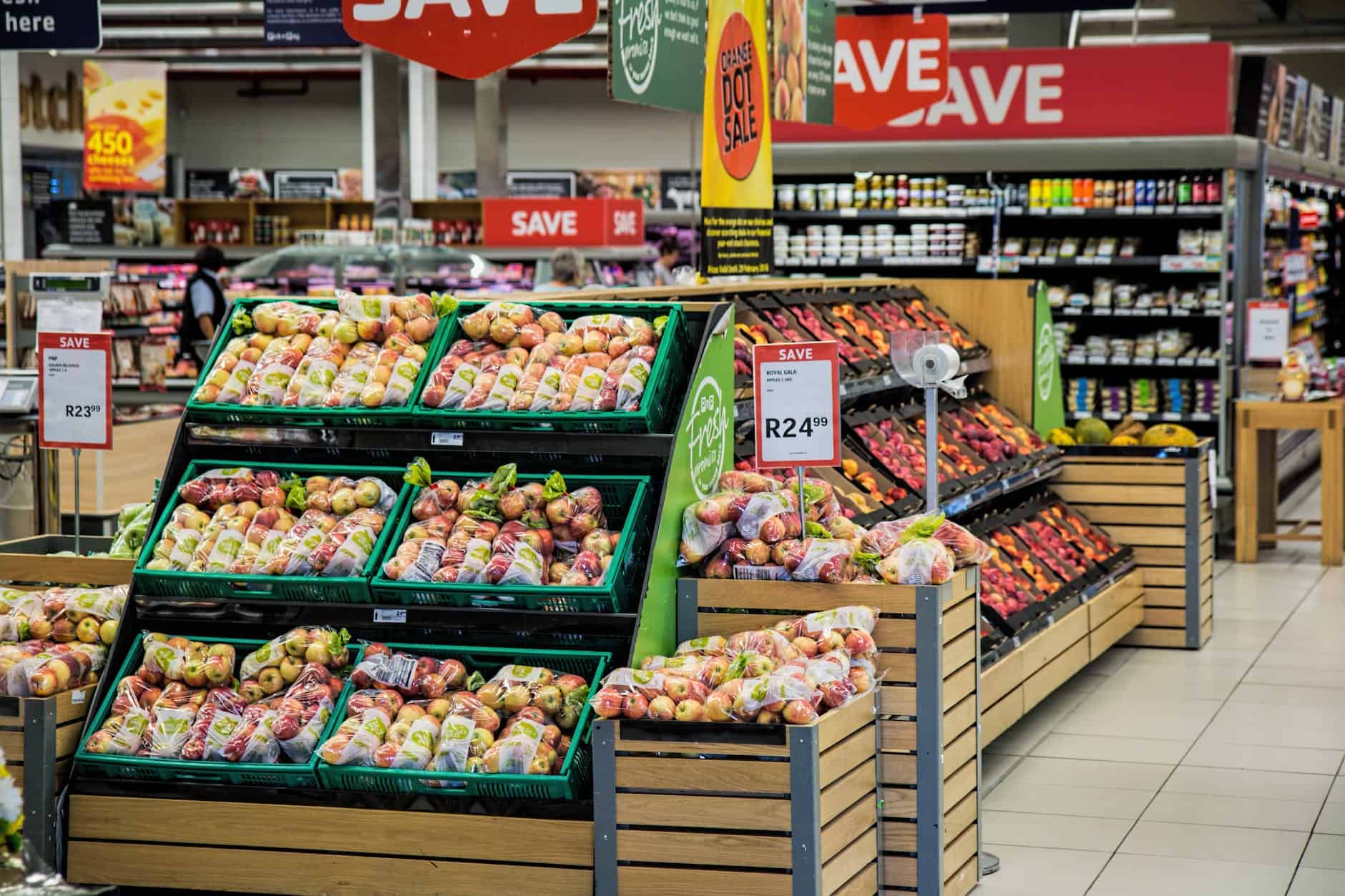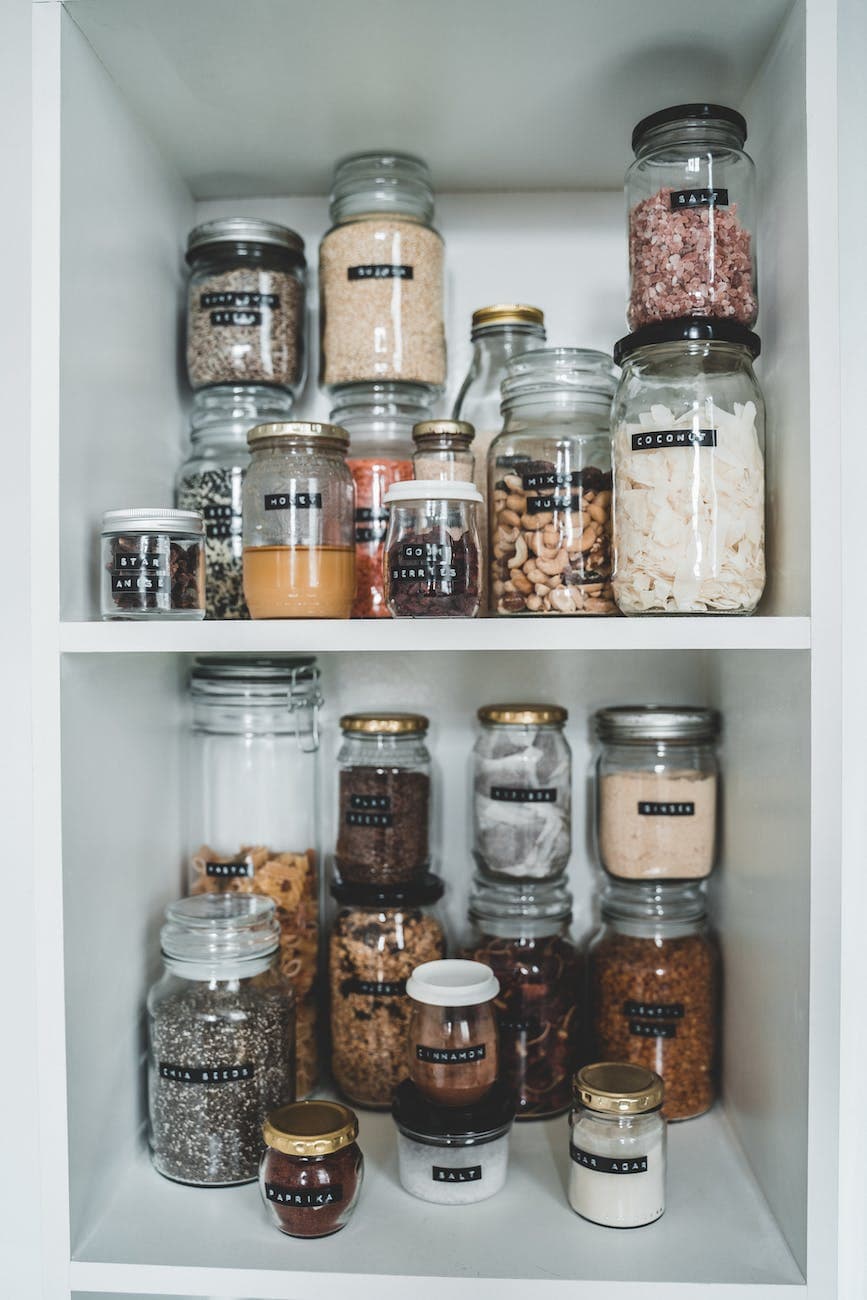3 Tips For Grocery Shopping On A Budget
This post may contain affiliate links. As Amazon Associates and through other affiliate programs, we earn from qualifying purchases if you click on a link – at no extra cost to you. We only promote products we actually use and truly love!
Wallet feeling strained? We’re sharing our best tips for grocery shopping on a budget, from meal planning to shopping smart and using what’s already in your pantry.
The holiday season is full of so much joy, love, and laughter – yet it’s often an incredibly stressful and busy time of year. Between hosting holiday get-togethers, buying presents for everyone on your list, and rushing to get your work done so you can actually enjoy your time off, it can feel like there’s a lot on your plate! Not to mention, the holidays are an incredibly expensive time of year.
To help you reset after the holidays and start the new year off right, we’re sharing our best tips on being frugal with food – from meal planning, to shopping smart, to working with what you’ve already got in the pantry. Not only do we have some easy hacks for shopping on a budget that will help your wallet recover post-Christmas, but we’ll also share a few of our favorite ways to stretch those ingredients as far as possible and make your new year’s meal prep a breeze.
Bonus: You can apply these ideas throughout the year to save money on groceries, reduce food waste in your home, and come up with some creative dishes when you’re running low on ingredients!

Tip #1: Plan Your Meals Wisely
Meal planning is the number one way to be frugal with your food, for two reasons:
- When you plan your meals in advance, it helps you only buy what you need – and not have any food go to waste. Because throwing food in the trash is basically like throwing money in the trash!
- Planning out your meals wisely can help you stretch one set of ingredients throughout different meals for the week, getting the most bang for your buck – especially when your budget is tight.
We typically plan specific dinners for each day of the week, make enough food to have the leftovers for lunch, and then have a loose idea of what we want to eat for breakfast and snacks. This helps us create a concise grocery list at the start of each week so we know exactly what to buy. If you don’t already have a meal planning strategy, check out our best meal planning tips and tricks article.
You can easily stretch groceries throughout the week by planning meals in succession that use common ingredients. If you have a few favorite recipes that all use pasta, or the same type of cheese, or even the same types of veggies, try to stack at least 2 or 3 of those in the same week. This will help you actually use all of your ingredients while reducing the number of items you have to purchase.
It’s also worth noting that one surefire way to reduce your grocery spend is to plan more meatless meals, if you’re not already vegetarian or vegan. There are tons of delicious vegetarian meals you can make that are still packed with protein and nutrients, but cost a lot less to make than meat-heavy dishes! Check out our best vegetarian recipes here if you want to eat less meat but don’t know where to start.
One thing to note: You don’t always have to be super strict with your meal planning – sometimes a loose idea can actually help you save even more money! Being flexible can help you make frugal decisions at the grocery store when it comes to swapping out more expensive items like protein and dairy. For instance, you can loosely plan something like a “meat & potatoes” night or a seafood dinner and then see what’s on sale before deciding exactly what to make.

Tip #2: Shop Smart
It may sound obvious, but “shopping smart” is one of the best ways to save money on food. Here’s what we mean by shopping smart:
- Buy items when they’re on sale and take advantage of coupons
- Opt for generic brand items instead of name-brand (they’re often the same product with different labels!)
- Shop multiple stores to get the best deals
Most of these tips are self-explanatory and easy to implement, but they’re also easy to forget unless you make a habit of them. These strategies are also subjective – they can really depend on your individual situation and may or may not be worth your time. So take these tips with a grain of salt and figure out what works best for you!
Sales & Coupons
Stock up on expensive grocery items and shelf-stable favorites when they’re on sale, like:
- Butter and margarine
- Condiments (ketchup, peanut butter, barbecue sauce, etc.)
- Snacks (chips, crackers, nuts)
- Cheese
- Poultry
- Pork
- Ground beef
Butter and margarine will typically last for a few months in the fridge, and most shelf-stable condiments and snacks will stay good for at least 6 to 9 months (unopened). Even some cheeses will last a fairly long time in the fridge, as long as they’re left unopened.
Depending on where you live, certain types of poultry or meat may be expensive or hard to come by, or both. One way to save money in this area and ensure you have the right ingredients available is to stock up on meat when it’s on sale and freeze it. Frozen raw meat will last for at least a couple of months (check out this food safety chart for a complete guide), and you can easily defrost it in the fridge for use the next day.
You can also purchase meat in bulk and cook some of it before freezing for easy meals later on. We love pulled pork, so whenever the pork shoulder is on sale we buy one and cook it up right away in our slow cooker. Then we use some for sandwiches during the week and freeze the rest for later!
Buy Generic Brand Items
Opting for generic brand groceries (when it makes sense) is a no-brainer for saving money. Here’s why: most generic brand products are actually brand-name products wrapped in a different label. Big box stores like Target, Walmart, and Costco often go straight to the source that manufactures the branded items for their store brand foods. They can then sell these at a comparatively lower price, since there’s no extra markup to cover advertising spend.
Most of the time, store-brand items taste just as good as (if not better than) your favorite name brand items. Case in point: we recently tried Target’s favorite day vanilla ice cream, and it tasted better than Breyer’s. At half the price. That’s a deal we’re more than happy to take if it means we have room in the budget for ice cream!
Now, there are certain cases where you might want to spring for the name-brand item. Some recipes call for high quality ingredients, and purchasing branded items you already know and love ensures the final dish will taste exactly as expected. This often applies to ingredients like olive oil, balsamic vinegar, baking products, and dairy. In any case, make sure to compare generic ingredients you’re interested in trying to the branded one you know if you haven’t purchased it before – that should help you decide if it’s going to be comparable enough in flavor.
Shop At Multiple Stores
Depending on how far you’re willing to go out of your way for a good deal, you may or may not want to scout multiple stores for the best deals. This is something that can easily happen over time. As you visit different grocery stores, pay attention to what you’re spending on your grocery staples. Is there a trend of better prices at one store versus another? You may be surprised at what you find.
We’re lucky enough to live right next to a shopping center that has both a Whole Foods and a Target, so we often make a single grocery trip with a stop at each store. We generally buy our produce, meat, and bakery items at Whole Foods for the best quality and price. However, we get our dairy products and pantry items such as pasta, beans, grains, and condiments at Target since they’re almost always cheaper and just as high-quality as anywhere else.
Check out a few grocery stores, local markets, and even Target or Walmart to find the stores that give you the best balance of price and quality for the items you buy most often. If it’s convenient, you can even split your shopping between two or three stores like we do. Thankfully, most stores even offer online ordering and pickup now, so you can spend the same amount of time hitting up multiple stores instead of wandering around one!

Tip #3: Work With What You Already Have
Finally, you can save money on food by not spending it at all – and using what you already have hiding in your pantry!
At some point in time, most of us have probably stocked up on shelf-stable items and then forgotten about them as they’ve been pushed to the back of the cabinet over time. If you’re nodding your head, this is your wake-up call to go take inventory of your pantry, and make a habit of it! As soon as we adopted this practice, two things happened:
- It became so much easier to plan budget-friendly meals around pantry ingredients on weeks when we didn’t want to spend so much on groceries.
- We stopped wasting food we didn’t even know we had until it was 3 years past its expiration date.
Having a mental note – or even a physical note on a piece of paper, or your phone – about what’s actually in your pantry will help you come up with meals that actually use those ingredients.
The other great thing about this strategy? You can often stretch meals pretty far when they’re made with pantry staples like pasta, rice, and beans. That one box of spaghetti you’ve had for about 6 months can turn into a week’s worth of meals when money’s tight, especially if you get creative with whatever sauces, condiments, and other ingredients you might already have on hand.
One more thing that goes hand in hand with this strategy: Getting good at cooking creative meals at home can help you eat out less frequently, and save money while you’re at it. Even if you have to spend some cash on a few special ingredients, homemade dinners are often less expensive than restaurant meals – and can taste just as good! If you need a little inspiration, browse our comfort food dinner recipes.
TLDR: Summary and Conclusion
Our 3 tips for grocery shopping on a budget, in a nutshell:
- Meal plan. Knowing what you’re going to make helps you streamline your grocery list and avoid buying unnecessary items at the store. It can also help you plan around sales or coupons to save money.
- Shop smart. Stock up on frequently used ingredients when they’re on sale, buy generic brand items, and shop multiple stores (if you can) to find the best prices.
- Use what you have. Shop your own kitchen first! You’d be amazed at what you can make with just a few pantry staples and those frozen veggies you forgot you bought a few months ago.
We hope these tips help you stick to your budget, especially now that groceries are getting more and more expensive. If you found this article helpful, please share it with your friends and let us know your thoughts in the comments section below.
Tell us in the comments below, what are your go-to strategies for saving money and grocery shopping on a budget? Have you found any tricks that work best for you? Or have you tried any of our tips above and found success?
If you have any questions regarding the information presented in this post, please refer to our Nutrition Disclaimer here.
Looking for kitchen inspiration? Head over to our shop to see what we cook with every day, plus recommendations for foodie gifts and eco-friendly products.

